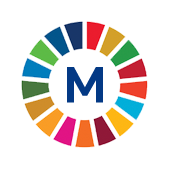 2.5.1b Number of animal genetic resources for food and agriculture secured in either medium or long-term conservation facilitiesMetadataPeriod: AnnualYear: 2025 |
 2.5.1b Number of animal genetic resources for food and agriculture secured in either medium or long-term conservation facilitiesMetadataPeriod: AnnualYear: 2025 |
| METADATA |
| Indicator information |
| Definition and methodology |
| Data source type and data collection method |
| Notes |
| ID of global indicator |
| Metadata update |
| Global metadata |
| Indicator information | Top |
| Indicator | |
2.5.1b Number of animal genetic resources for food and agriculture secured in either medium or long-term conservation facilities | |
| Global indicator name | |
2.5.1 Number of (a) plant and (b) animal genetic resources for food and agriculture secured in either medium- or long-term conservation facilities | |
| Target | |
2.5 By 2020, maintain the genetic diversity of seeds, cultivated plants and farmed and domesticated animals and their related wild species, including through soundly managed and diversified seed and plant banks at the national, regional and international levels, and promote access to and fair and equitable sharing of benefits arising from the utilization of genetic resources and associated traditional knowledge, as internationally agreed | |
| Goal | |
Goal 2. End hunger, achieve food security and improved nutrition and promote sustainable agriculture | |
| Definition and methodology | Top |
| Definition | |
Conservation of plant and animal genetic resources for food and agriculture (GRFA) in medium- or long-term conservation facilities (ex situ, in gene banks). Conservation of plant and animal resources for food and agriculture in medium- and long-term conservation facilities is considered one of the most reliable means of conserving genetic resources worldwide. Genetic resources preserved in this way can be relatively easily revitalized, and the number of genetic resources preserved in this way provides a general insight into how successful we are in maintaining/increasing overall genetic diversity for the future. This type of conservation of genetic diversity prevents the permanent loss of genetic diversity that can occur if samples are only preserved on farms and in situ. | |
| Methodological explanations | |
The data represent numerical information on local breeds (animal genetic resources) for which sufficient genetic resources for reconstitution are ensured in the medium and long term. Data for this sub-indicator are collected by the national coordinators of the DAD-IS database at FAO. The assessment of the sub-indicator is primarily an assessment of how much genetic resource is “sufficient” to ensure reconstitution and is based on the Guidelines on Cryoconservation of animal genetic resources (FAO, http://www.fao.org/docrep/016/i3017e/i3017e00.htm). | |
| Method of calculation | |
The animal component is calculated as the number of local breeds (i.e., those reported to exist in only one country) stored in a genebank collection with the amount of stored genetic material needed to reconstitute the breed in the event of extinction (Guidelines for the Cryopreservation of Animal Genetic Resources, FAO, 2012, available at (www.fao.org/docrep/016/i3017e/i3017e00.htm). | |
| Unit of measure | |
number | |
| Available disaggregation | |
| Territorial level | |
Republic of Serbia | |
| Data source type and data collection method | Top |
| Data source | |
FAO - The Food and Agriculture Organization | |
| Periodicity of data collection | |
Annual | |
| Notes | Top |
| ID of global indicator | Top |
C020501 | |
| Metadata update | Top |
| 26/5/2025 | |
| Global metadata | Top |
https://unstats.un.org/sdgs/metadata/files/Metadata-02-05-01b.pdf | |